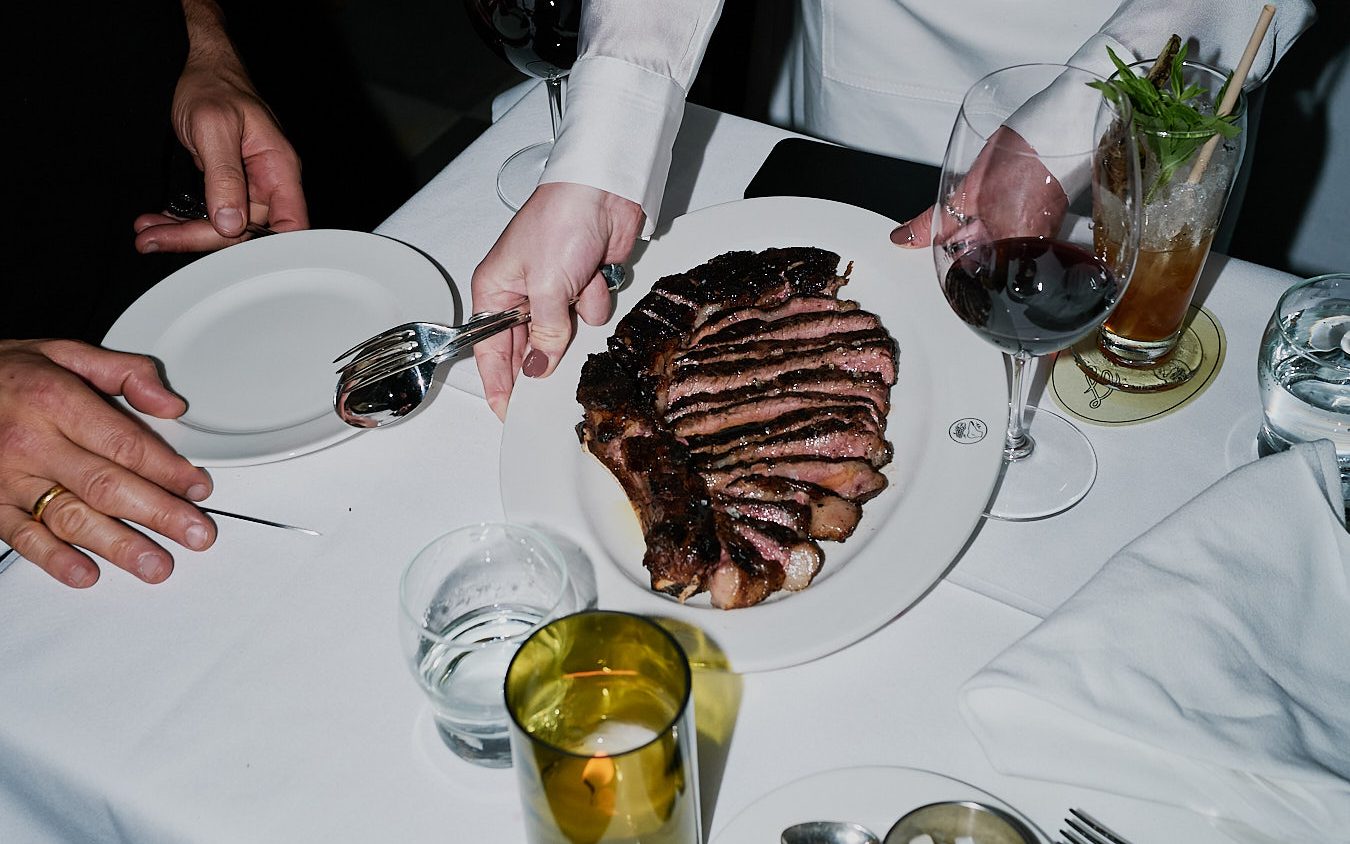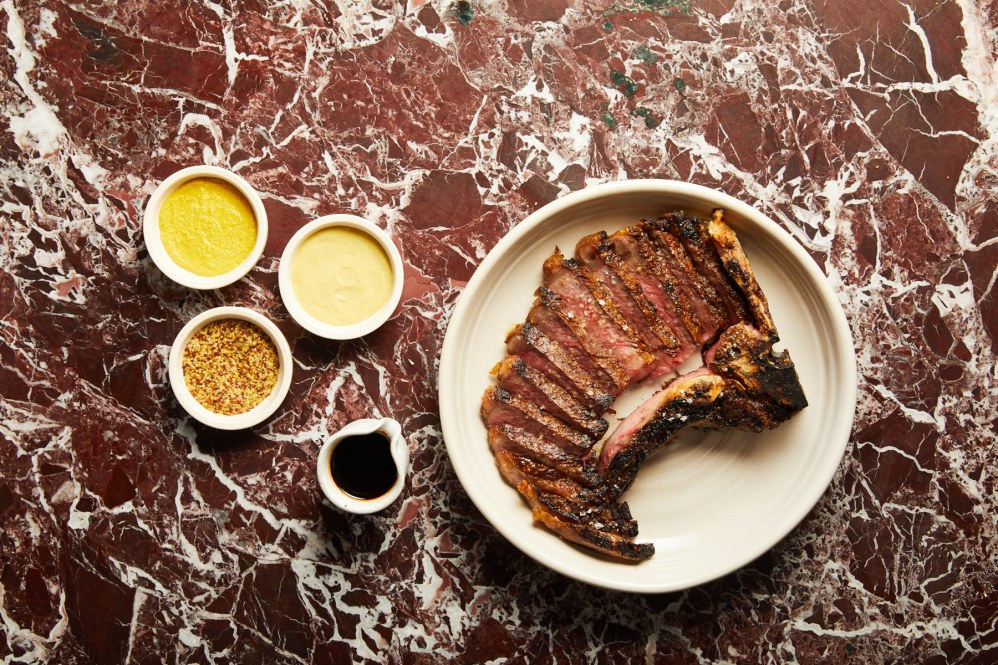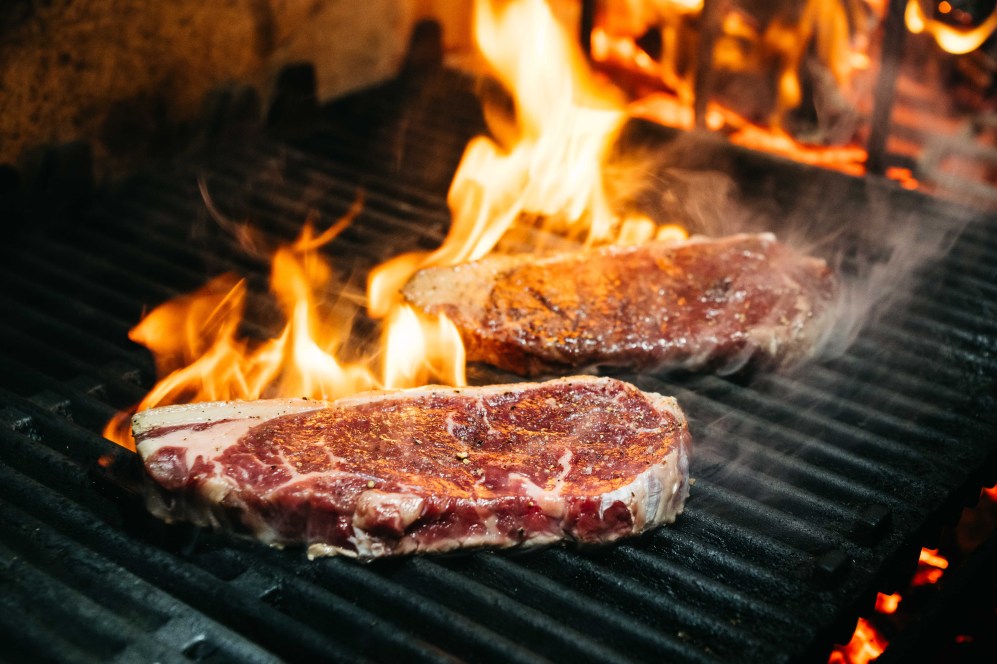If you’re ever on the hunt for a good steak, you’ll likely find one without exercising too much effort. Whether it’s a porterhouse, rump, or even a tomahawk — a cut of beef isn’t hard to source. But steak often comes with a hefty price tag, which means the protein is usually ordered by guests for special occasions over a casual meal — until now.
Venues are challenging the stereotype by putting steaks on the menu that don’t break the bank. Liquid & Larder’s James Bradey speaks to Hospitality about the group’s new value-for-money steakhouse Alfie’s, with Stefano Marano from Le Foote and Max Sharrad from Fugazzi covering cuts and cooking techniques.
Swillhouse’s Le Foote was one of Sydney’s most-anticipated restaurant openings this year. The Mediterranean grill always planned to put steak on the menu — and not just one, guests would have options. “We tested and tasted a huge variety of cuts, brands, and breeds,” says Head Chef Stefano Marano. “We found [the cuts we chose] to have the best consistency, caramelisation point, texture, and flavour.”
While quality and taste were part of the criteria, price also influenced the final decision. “I think it’s important to be able to cater for all (or at least most) customer needs and that includes price, size, and quality,” says Marano. “We could have picked some crazy expensive cuts and let customers pay for it, but we didn’t want to tuck into that market.”
The current menu lists steaks that cover multiple price points including a Jack’s Creek black Angus striploin for $64 plus a Black Tyde rib eye priced at $195. Both steaks are cooked over an open hearth of charcoal and wood, brushed with jus, and served with salsa verde and pickled onions.

Over at Adelaide’s Fugazzi, Executive Chef Max Sharrad is also serving up options when it comes to steak at the Italo-American bar and dining room. Price point is naturally a big factor for the chef when selecting proteins.
“We always consider price [when choosing our cuts],” he says. “We have some slightly cheaper cuts and some that can fetch a higher price. It’s almost like a wine menu in a way. There’s value at the lower end and some real premium stuff if you are prepared to pay for it.”
Diners can find options ranging from a 250g flat iron steak that is part of the venue’s tasting menu to a 1kg Bistecca a la Fiorentina for $165. There’s also a sirloin steak with pepper sauce and frites for $69, and a 9+ Wagyu rump cap with mash and beef glaze for $45 per 100g.
“We like to use a variety of different options each with their own unique flavour, texture, and aesthetic,” says Sharrad. The chef believes a broader consumer understanding of proteins and cuts means many guests are looking for choice when it comes to dining out.
“The general customer is much more informed now than 10 years ago — they expect variety,” says Sharrad. “Steak in general is an ‘expensive’ meat, so finding affordable and cheaper cuts is definitely something we always look for.”

Sydney’s Liquid & Larder is known for producing top-notch steaks across its venues Bistecca, The Gidley, and The Rover. But the group is now venturing down a different path with its latest concept Alfie’s. The value-for-money steakhouse opens this month and is serving up one cut of steak based on the idea of providing accessible but quality options to each and every guest.
Co-Founder and Director of Liquid & Larder James Bradey says the concept was inspired by what consumers were looking for when dining out. “I think it’s [steak] something people want to have, but they’re priced out of it with a lot of the offerings currently in the CBD market,” he says. “The full dining experience associated with
steakhouses is that it’s not something you can do all the time.”
Alfie’s will hero 250g portions of sirloin (without the bone). The venue is also prioritising time and looking to get steaks on the table within 15 minutes. “Getting people in to have a great steak at a good price and get out is the kind of model we’re going for,” says Bradey. “People are quite price-conscious and time poor, and we
wanted to appease that market.”
The structure of the menu also plays a role in cutting time and costs for diners. “We really took the angle of, ‘How do we enable our customers to spend less time committing to us and therefore making it more cost-effective for them at the end of their dining experience’,” says Bradey.
To do this, the team designed a menu that sees diners order their own individual
steak rather than dishes to share with the table. “They’re not committing to hours of time, so what they eat and drink during that period doesn’t inflate the bill.”
The cooking process also plays an important role in the value-for-money model. Supplier costs continue to rise as does labour, so having a quality raw product helps cut costs. “One of the areas that inflates the price is the duration it takes to prepare the product,” says Bradey. “If you take a great product and treat it simply, it requires less people to touch it and work on it.”

Like Sharrad, Bradey also believes consumer knowledge plays an important role in today’s varied steak offering. “I think consumers are much more savvy about what they’re ordering across the board — they like particular cuts,” he says. “There’s more media and publicity about different cuts of steak now, and rather than going to a restaurant and saying, ‘Can I have steak and chips’, they will order the fillet or the rib eye.”
It can be easy to look to cheaper products to increase margins, but Marano encourages chefs and operators to continue to prioritise the product. “There is only so low you can go until you start compromising on quality,” he says. “Hopefully, beef and fresh produce in general will go back down in price a little, or at least become closer to what the prices used to be.”
Bradey agrees, and says you can’t compromise when it comes to ingredients: “There’s only so much treatment you can give a product to make it better. What I love about steak is that it’s very honest — you see it on the plate.” Bradey suggests starting with a clear idea about what a venue wants to achieve when it comes to steak-centric dishes. “I would work out what you want to sell your product for, what margin you’re expecting to make off the product, and then going and finding the best,” he says.
Marano says it’s well worth looking beyond the usual cuts seen on menus. “It would be nice to see people being more adventurous and open to some of the lesser-known ‘poor cuts’,” he says. “Some of those cuts have so much flavour, you just need to scratch beneath the surface a little.” The chef lists skirt, bavette, and hanger as cuts to look to when it comes to cost-effective options. “They are generally quite well-priced, juicy, and super tasty if cooked correctly,” he says. “Some come with a little wastage in the prepping process, but that’s where butchering skills come in!”
As more diners increase their knowledge around food and expectations for varying price points rise, steak is following suit.
Sponsored Content

Celebrating coffee moments with Buondi
Sponsored by Nestlé Professional

Meet Force, the new player in commercial cookware
Sponsored by Tomkin
Trending Now
Resources
Lorem ipsum dolor sit amet, consectetur adipiscing elit. Fusce ac ornare lectus. Sed bibendum lobortis...
Lorem ipsum dolor sit amet, consectetur adipiscing elit. Fusce ac ornare lectus. Sed bibendum lobortis...
Sign up for our newsletter
